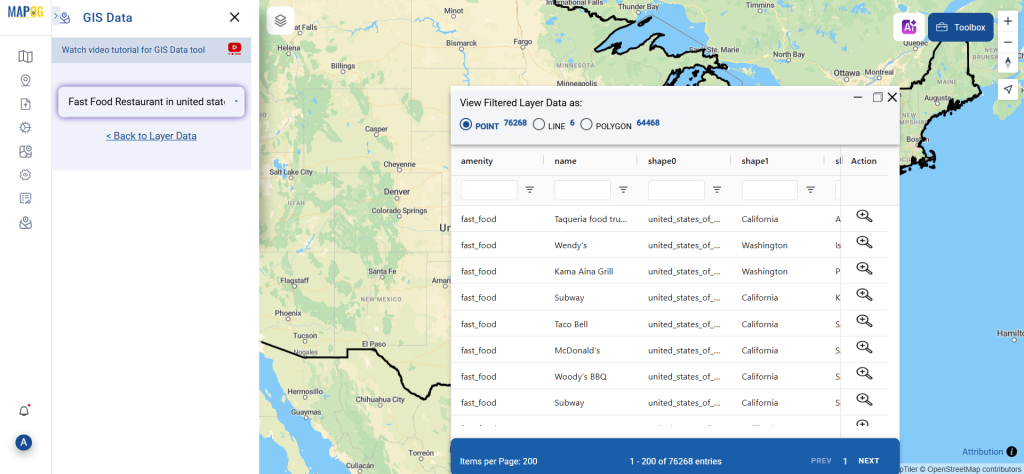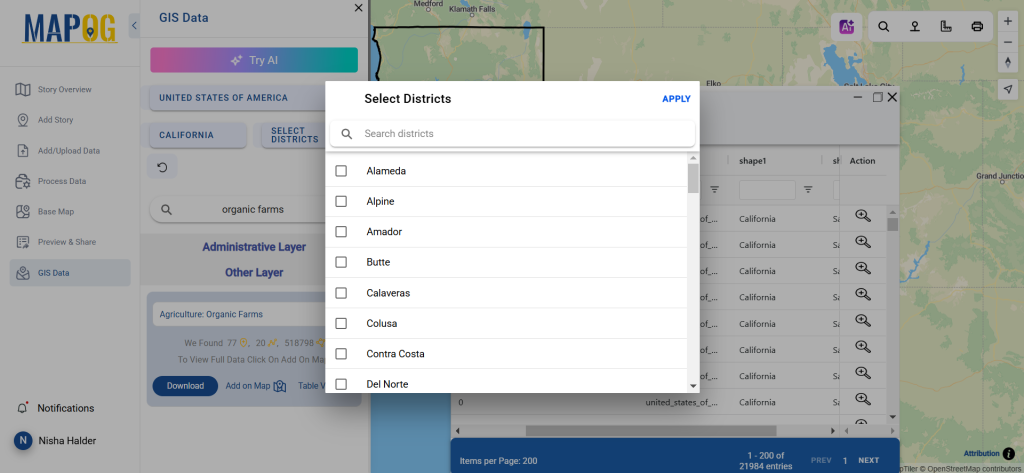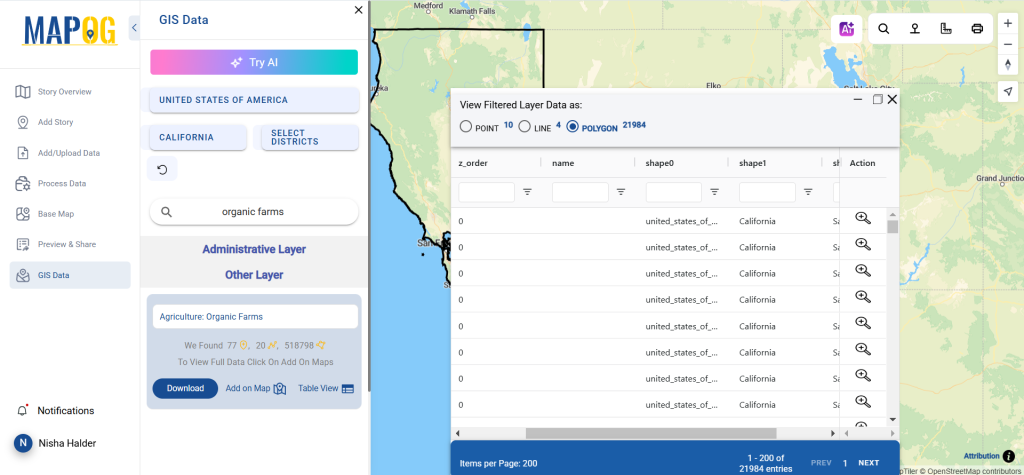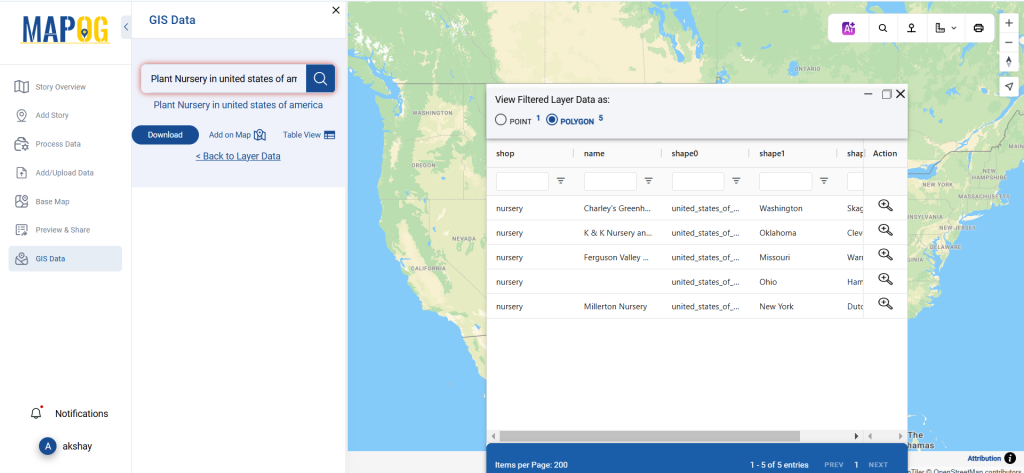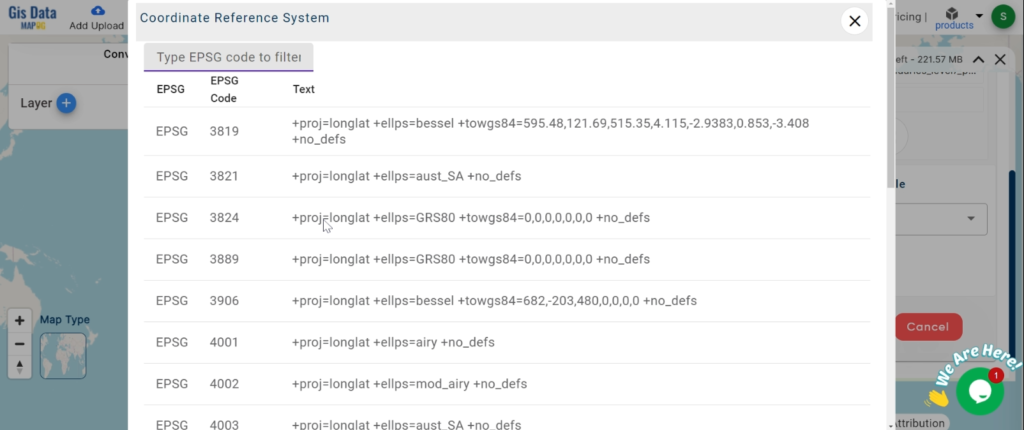Looking to explore or map culturally significant sites? Download Historical Monuments Data quickly and accurately using GIS Data by MAPOG. This intuitive platform offers data in over 15 GIS formats—including Shapefile, KML, GeoJSON, and MID—ensuring compatibility with major GIS tools. Whether you’re engaged in heritage conservation, academic research, urban planning, or tourism development, this tool provides well-structured, ready-to-use datasets that support detailed spatial analysis and visualization.
How to Download Historical Monuments Data
GIS Data by MAPOG offers a robust way to explore and download monument data from hundreds of geographic layers. The system supports a wide variety of file formats—such as KML, SHP, CSV, GeoJSON, SQL, DXF, MIF, TOPOJSON, and GPX—making it a preferred choice for GIS professionals, developers, and researchers alike.
Download Historical Monuments Data of any countries
Note:
- All data is provided in GCS datum EPSG:4326 WGS84 CRS (Coordinate Reference System).
- Users need to log in to access and download their preferred data formats.
Step-by-Step Guide to Download Historical Monuments Data
Step 1: Search for Historical Monuments Data
Begin by selecting the region of interest within the MAPOG interface. Use the “Search Layer” function and look for “Historical Monuments Data.” Depending on the dataset, the information may appear as points or polygons, representing locations or boundaries.

Step 2: Use the AI Search Tool
Let MAPOG’s “Try AI” assist you. Simply input keywords like “Monuments near me” or “Heritage sites,” and the AI tool will present the most relevant layers. This feature not only saves time but also enhances search accuracy.

Step 3: Apply Data Filters
Fine-tune your search using the Filter Data option. You can narrow the dataset by selecting specific states and districts. For nationwide datasets, this feature enables deep-level filtering—making it easier to locate and analyze monuments based on administrative boundaries.
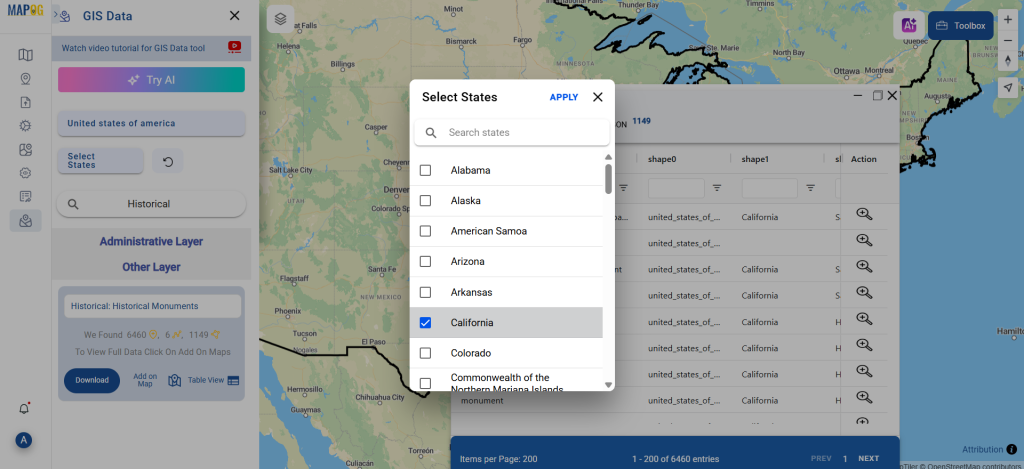
Step 4: Visualize with ‘Add on Map’
Click the Add on Map option to overlay the selected layer onto the GIS map analysis interface. This allows for better visualization and spatial examination of monument locations, clustering, accessibility, and relation to nearby landmarks or infrastructure.

Step 5: Download Historical Monuments Data
Once you’ve finalized your dataset, click “Download Data.” Choose whether to download a sample or the full dataset. Select your desired format—Shapefile, KML, GeoJSON, MID, or others—accept the usage terms, and download your data for offline or project use.

Final Thoughts
With MAPOG’s powerful GIS platform, the ability to download Historical Monuments Data becomes efficient and user-friendly. The platform caters to diverse GIS applications, offering detailed insights and flexibility in how data is accessed and applied. Whether you’re a cultural researcher, urban planner, or GIS enthusiast, MAPOG ensures that heritage-focused spatial data is always within reach.
With MAPOG’s versatile toolkit, you can effortlessly upload vector and upload Excel or CSV data, incorporate existing layers, perform polyline splitting, use the converter for various formats, calculate isochrones, and utilize the Export Tool.
For any questions or further assistance, feel free to reach out to us at support@mapog.com. We’re here to help you make the most of your GIS data.
Download Shapefile for the following:
- World Countries Shapefile
- Australia
- Argentina
- Austria
- Belgium
- Brazil
- Canada
- Denmark
- Fiji
- Finland
- Germany
- Greece
- India
- Indonesia
- Ireland
- Italy
- Japan
- Kenya
- Lebanon
- Madagascar
- Malaysia
- Mexico
- Mongolia
- Netherlands
- New Zealand
- Nigeria
- Papua New Guinea
- Philippines
- Poland
- Russia
- Singapore
- South Africa
- South Korea
- Spain
- Switzerland
- Tunisia
- United Kingdom Shapefile
- United States of America
- Vietnam
- Croatia
- Chile
- Norway
- Maldives
- Bhutan
- Colombia
- Libya
- Comoros
- Hungary
- Laos
- Estonia
- Iraq
- Portugal
- Azerbaijan
- Macedonia
- Romania
- Peru
- Marshall Islands
- Slovenia
- Nauru
- Guatemala
- El Salvador
- Afghanistan
- Cyprus
- Syria
- Slovakia
- Luxembourg
- Jordan
- Armenia
- Haiti And Dominican Republic
- Malta
- Djibouti
- East Timor
- Micronesia
- Morocco
- Liberia
- Kosovo
- Isle Of Man
- Paraguay
- Tokelau
- Palau
- Ile De Clipperton
- Mauritius
- Equatorial Guinea
- Tonga
- Myanmar
- Thailand
- New Caledonia
- Niger
- Nicaragua
- Pakistan
- Nepal
- Seychelles
- Democratic Republic of the Congo
- China
- Kenya
- Kyrgyzstan
- Bosnia Herzegovina
- Burkina Faso
- Canary Island
- Togo
- Israel And Palestine
- Algeria
- Suriname
- Angola
- Cape Verde
- Liechtenstein
- Taiwan
- Turkmenistan
- Tuvalu
- Ivory Coast
- Moldova
- Somalia
- Belize
- Swaziland
- Solomon Islands
- North Korea
- Sao Tome And Principe
- Guyana
- Serbia
- Senegal And Gambia
- Faroe Islands
- Guernsey Jersey
- Monaco
- Tajikistan
- Pitcairn
Disclaimer : The GIS data provided for download in this article was initially sourced from OpenStreetMap (OSM) and further modified to enhance its usability. Please note that the original data is licensed under the Open Database License (ODbL) by the OpenStreetMap contributors. While modifications have been made to improve the data, any use, redistribution, or modification of this data must comply with the ODbL license terms. For more information on the ODbL, please visit OpenStreetMap’s License Page.
Here are some blogs you might be interested in:
- Download Airport data in Shapefile, KML , MIf +15 GIS format – Filter and download
- Download Bank Data in Shapefile, KML, GeoJSON, and More – Filter and Download
- Download Railway data in Shapefile, KML, GeojSON +15 GIS format
- Download Farmland Data in Shapefile, KML, GeoJSON, and More – Filter and Download
- Download Pharmacy Data in Shapefile, KML, GeoJSON, and More – Filter and Download
- Download ATM Data in Shapefile, KML, MID +15 GIS Formats Using GIS Data by MAPOG
- Download Road Data in Shapefile, KML, GeoJSON, and 15+ GIS Form



